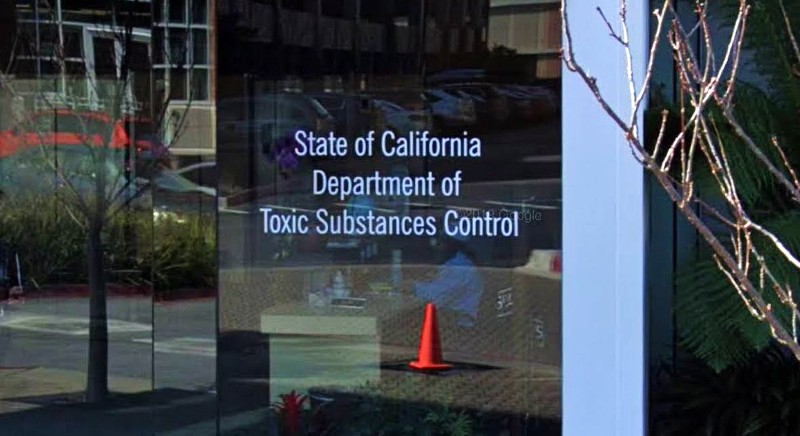The state has ordered Sims Metal to investigate and clean up possible pollution related to its scrap metal recycling facility near the Port of Redwood City in the wake of a fire on March 9.
California’s Department of Toxic Substances Control (DTSC) said in a statement Monday that the 12-acre recycling and shredding operation at 699 Seaport Blvd. has a “history of violating hazardous waste laws, including releasing elevated levels of lead, zinc and cadmium both on- and off-site.” It ordered the company to launch an investigation and cleanup evaluation that includes “recent and historical release at the facility, including any impacts from a March 9 fire.”
DTSC expressed concern over the potential health impacts to the community, as the facility is located within two miles of day care centers, parks, hospitals, schools and homes, and adjacent to Redwood Creek, a trail and two islands of the Don Edwards San Francisco Bay National Wildlife Refuge. The area has seen increased visitors with fresh fish sales, live music and movies at the Port of Redwood City. Construction of a ferry terminal, restaurants, hotels and amenities are envisioned in the Port’s future.
“DTSC has a responsibility to protect communities and the environment from companies and industries that pollute,” DTSC Director Dr. Meredith Williams said in a statement. “Metal recycling facilities have drawn our attention because of the potential exposure from harmful materials coming from these types of operations.”
As recent as 2019, DTSC inspectors “discovered hazardous waste levels of toxic chemicals in several places within facility grounds,” according to DTSC. “Inspectors also found buildup of light fibrous materials, a hazardous substance, on the facility’s pavement and near its operations,” the agency said.
The DTSC order also cites similar findings during inspections in 2012 of the facility’s border and neighboring sidewalk and properties, in addition to findings in 2011 by the U.S. Environmental Protection Agency (EPA) and a contractor for the adjacent Cargill salt operations at 295 Seaport Blvd.
“Releases from the facility may have migrated toward soil, groundwater, air, neighboring properties, and surface waters such as Redwood Creek and the San
Francisco Bay,” the order states.
The order imposes a timeline for Sims Metal’s investigation into its environmental impact and subsequent mitigation efforts.
A request for comment from Sims Metal has not yet been returned.






